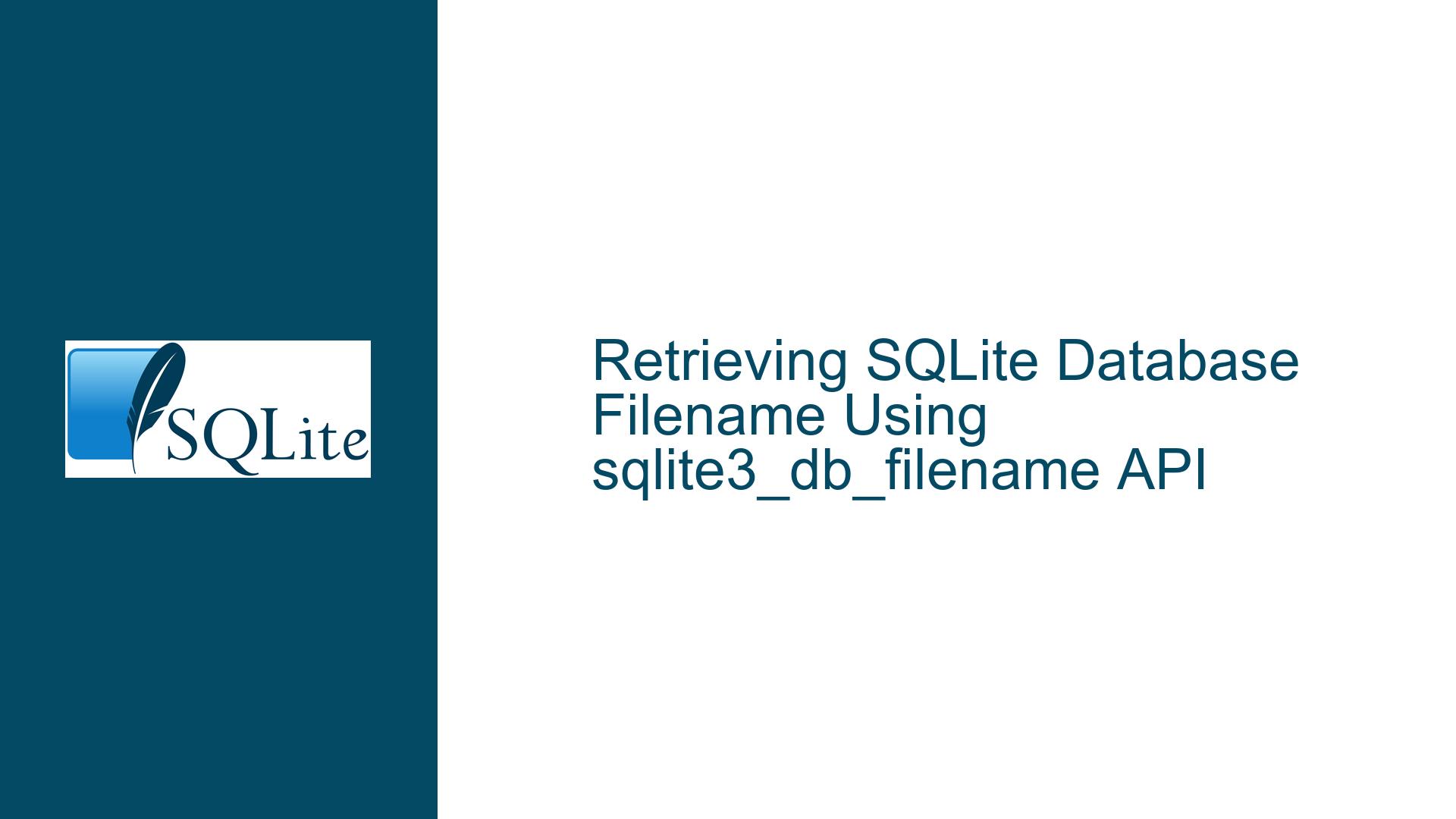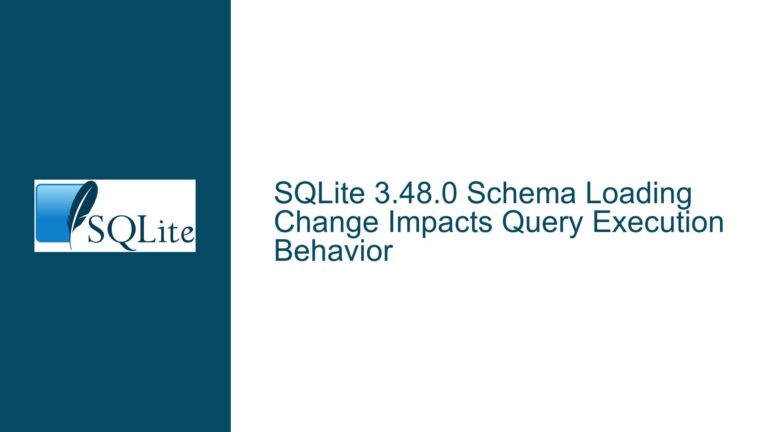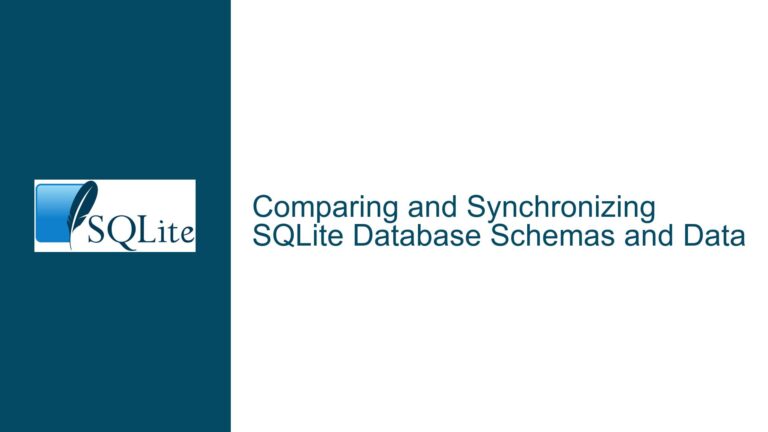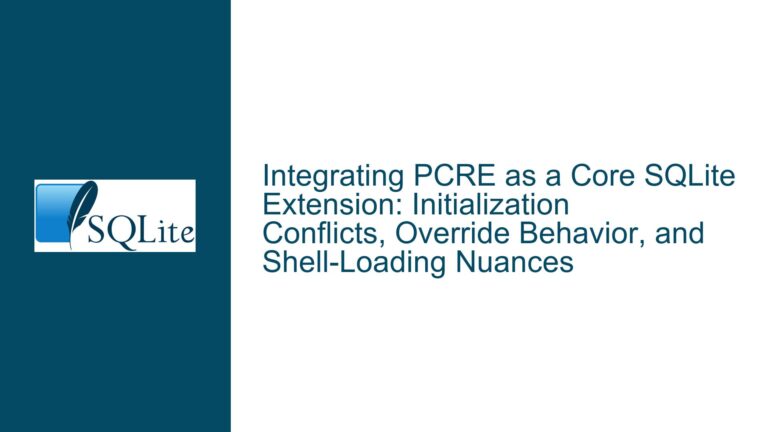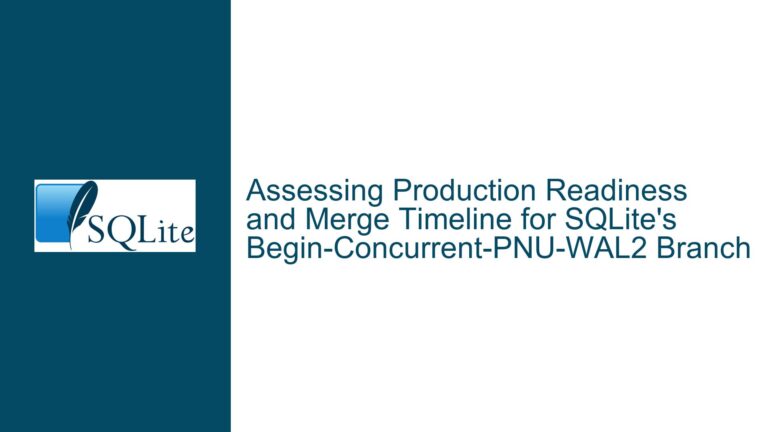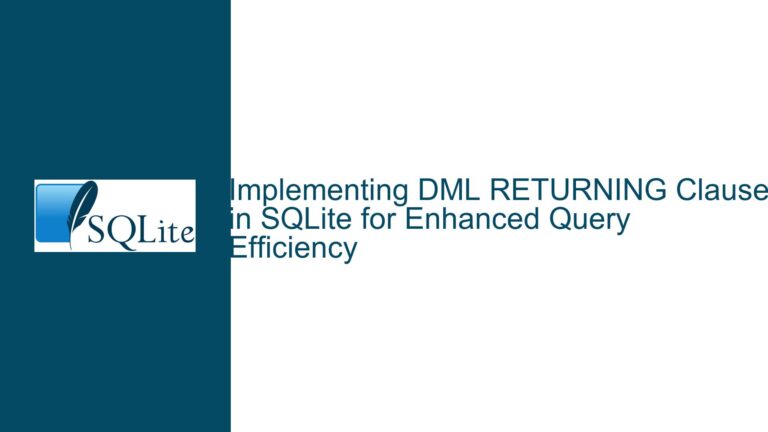Retrieving SQLite Database Filename Using sqlite3_db_filename API
Understanding sqlite3_db_filename and Its Expected Behavior
The sqlite3_db_filename API in SQLite is designed to retrieve the filename associated with a specific database attached to a connection. This function is particularly useful when working with multiple databases attached to a single connection, as it allows you to query the file path of each database. The function signature is as follows:
const char *sqlite3_db_filename(sqlite3 *db, const char *zDbName);
Here, db is the database connection handle, and zDbName is the schema name of the attached database. If zDbName is NULL, the function returns the filename of the main database. If the specified database is not attached, or if it is a temporary or in-memory database, the function returns either a NULL pointer or an empty string.
The confusion often arises when developers expect sqlite3_db_filename to return the filename of the main database without explicitly passing NULL as the schema name. This misunderstanding can lead to unexpected results, such as receiving an empty string instead of the expected file path.
Common Missteps with sqlite3_db_filename and Schema Naming
One of the most common issues when using sqlite3_db_filename is the incorrect handling of schema names. When a database is opened using sqlite3_open, the main database is associated with the connection, but additional databases can be attached using the ATTACH DATABASE command. Each attached database is assigned a schema name, which is used to reference the database in SQL queries and API calls.
For example, consider the following SQL command:
ATTACH DATABASE 'd:/sqlite32/db/chinook.db' AS atDB;
In this case, atDB is the schema name assigned to the attached database. When calling sqlite3_db_filename, you must pass atDB as the zDbName parameter to retrieve the filename of this specific database. If you pass NULL, the function will return the filename of the main database.
Another common mistake is assuming that the schema name is the same as the database filename. For instance, if you open a database named myDB.db, the schema name for the main database is main, not myDB. This distinction is crucial when working with sqlite3_db_filename, as passing the wrong schema name will result in an empty string or NULL being returned.
Correct Usage and Troubleshooting of sqlite3_db_filename
To correctly use sqlite3_db_filename, you must first understand the relationship between the database connection, the schema names, and the attached databases. Here are the steps to ensure you retrieve the correct filename:
Open the Database Connection: Use
sqlite3_opento open the main database and obtain a connection handle.sqlite3 *db; int rc = sqlite3_open("foo.db", &db); if (rc != SQLITE_OK) { fprintf(stderr, "Cannot open database: %s\n", sqlite3_errmsg(db)); return rc; }Attach Additional Databases (if needed): Use the
ATTACH DATABASEcommand to attach additional databases to the connection. Ensure you assign a unique schema name to each attached database.ATTACH DATABASE 'd:/sqlite32/db/chinook.db' AS atDB;Retrieve the Filename: Use
sqlite3_db_filenamewith the appropriate schema name to retrieve the filename. For the main database, passNULLas the schema name. For attached databases, pass the schema name assigned during theATTACH DATABASEcommand.const char *mainDbFilename = sqlite3_db_filename(db, NULL); printf("Main DB filename: %s\n", mainDbFilename); const char *attachedDbFilename = sqlite3_db_filename(db, "atDB"); printf("Attached DB filename: %s\n", attachedDbFilename);
If you encounter issues where sqlite3_db_filename returns an empty string or NULL, consider the following troubleshooting steps:
Verify the Schema Name: Ensure that the schema name passed to
sqlite3_db_filenamematches the one used in theATTACH DATABASEcommand. Remember that the main database has the schema namemain, and you should passNULLto retrieve its filename.Check for Temporary or In-Memory Databases: If the database is temporary or in-memory,
sqlite3_db_filenamewill return an empty string orNULL. Ensure that the database you are querying is a file-based database.Confirm Database Attachment: Ensure that the database you are trying to query is actually attached to the connection. You can use the
.databasescommand in the SQLite CLI to list all attached databases and their schema names.Use Absolute Paths: When opening or attaching databases, use absolute paths to avoid issues with relative paths, especially on Windows. This ensures that
sqlite3_db_filenamereturns the correct fully qualified filename.
By following these steps and understanding the nuances of sqlite3_db_filename, you can effectively retrieve the filenames of databases attached to a SQLite connection. This knowledge is essential for debugging and ensuring that your application correctly interacts with multiple databases.
